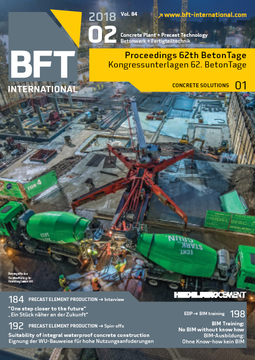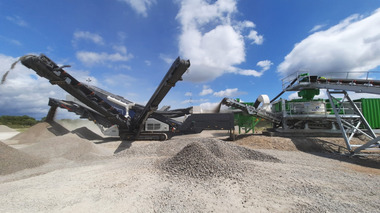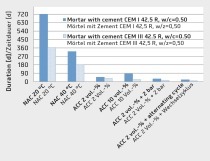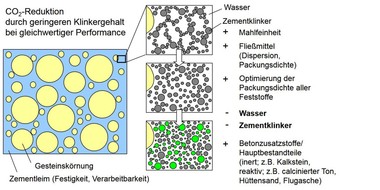Re-evaluation of life cycle assessments for concrete products?
Carbonation is the physical and chemical reaction between CO2 and hardened cement paste in the presence of pore water, and in this process carbon from the atmosphere is sequestered. The authors of an article [1] published in „Nature Geoscience“ in November 2016 estimate that from 1930 to 2013 worldwide 43 % of the CO2 process emissions from the production of cement had been sequestered in carbonating of concrete and mortar in the same period.
Hence, the perspective taken in the article evaluates a global CO2 balance for a period completed in the past. But an assessment of the question, which proportion of carbon dioxide determined for the current production of cement can be sequestered by carbonation, would require input variables deviating to some extent from the assumption made in the article. The following can be mentioned as examples:
Ratio of cement mortar/concrete: The calculations of „Nature Geoscience“ assumed that 30 % of the production of cement is used in mortar. Other scientists consider this percentage for current evaluations as too high.
Clinker factor: The maximum uptake of carbon in hardened cement paste depends, among other things, on the proportion of cement clinker in the cement. In „Nature Geoscience“ the proportion of clinker was estimated at 75 % to 97 % (statistically distributed), whereas the average clinker factor of current cements is lower (about 74 % in Germany in 2015).
The carbon dioxide emitted in the production of cement associated with the incineration of fossil fuels has not been included in the above-mentioned percentage of 43 %.
An annex to the forthcoming standard EN 16757 [2] will provide guidance by means of which qualified estimates for the CO2 uptake of cementitious building materials will be facilitated. The CO2 uptake calculated in this way can be included in life cycle assessments, so to partially offset the global warming potential associated with the production of cementitious building materials.






